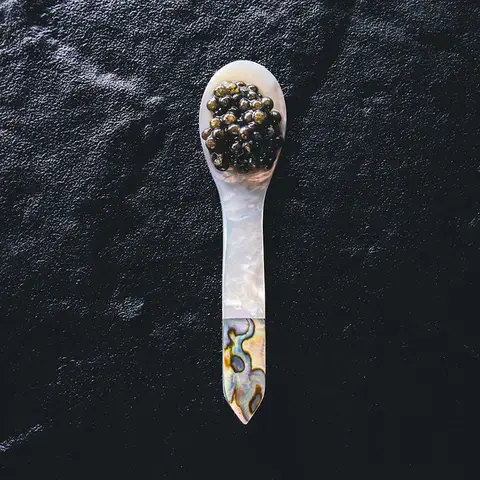When it comes to cooking, lulo proves incredibly versatile, too. A glance at the latest menu of Elcielo Miami, part of the international Elcielo Dining Group, proves that lulo is equally fit for desserts and appetizers. At the 10-year-old restaurant, which has held a Michelin star since 2022, the fruit is part of a Colombian ceviche, the welcome bites—lulo gel garnished with a finger lime and golden berry—and the petit fours, which are filled with lulo.
“It is a fruit that can be used in sauces, ceviches, savory food or desserts, cocktails,” says Elcielo’s Executive Chef Juan Manuel Barrientos Valencia. “Its flavor is unique, one of a kind and strongly savory. It works fine with salt, spices, or sugar.”
As diverse as it is, tiny lulo is notoriously difficult to grow and transport fresh, as it’s delicate and prone to falling apart in the process. Chefs and mixologists often work around this by ordering the product in puree form. The Elcielo group sources theirs from Mr. Fermore, a Colombian-owned company that, according to Barrientos Valencia, imports high quality fruit pulp to the US and originally buys the fruit from fair trade Colombian farmers. Occasionally, chefs get lucky with a fresh lulo shipment from a small grower like Miami Fruit, which specializes in rare tropical fruit. Supply is always limited.
For the chefs bringing lulo to the forefront, not without challenges, the fruit represents both nostalgia and innovation—what they grew up with is a new, exciting flavor for many diners. “For me, lulo always brings back memories of my family, gathered in the afternoon, sipping lulada and spending time together,” says Parche co-owner Camillo Arcon, referring to a traditional drink popular in Colombia's El Valle, made with lulo pulp, lime juice, sugar, ice, and water, or occasionally milk.
“Lulo represents a moment—usually in the afternoon, when people finish work and gather to enjoy the drink, Arcon says. “It’s a fruit that brings us together, much like the meaning of the word 'parche,' which is all about gathering and connecting.”
It is often a childhood memory as well; “When I would visit Colombia as a child, we would eat lulo with a little sugar because it can be pretty tart even when ripe. I also grew up eating it in jams for breakfast,” reminiscence Mägo’s Liberman. However, one need not grow up with lulo to enjoy it. “People really love lulo,” says Arcon. “Colombians are more familiar with it, but once someone tries it, they can't help but fall in love with its unique flavor.”
















